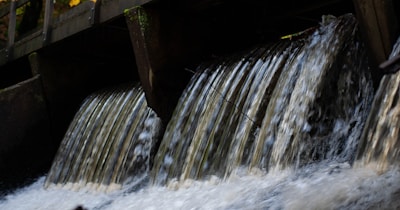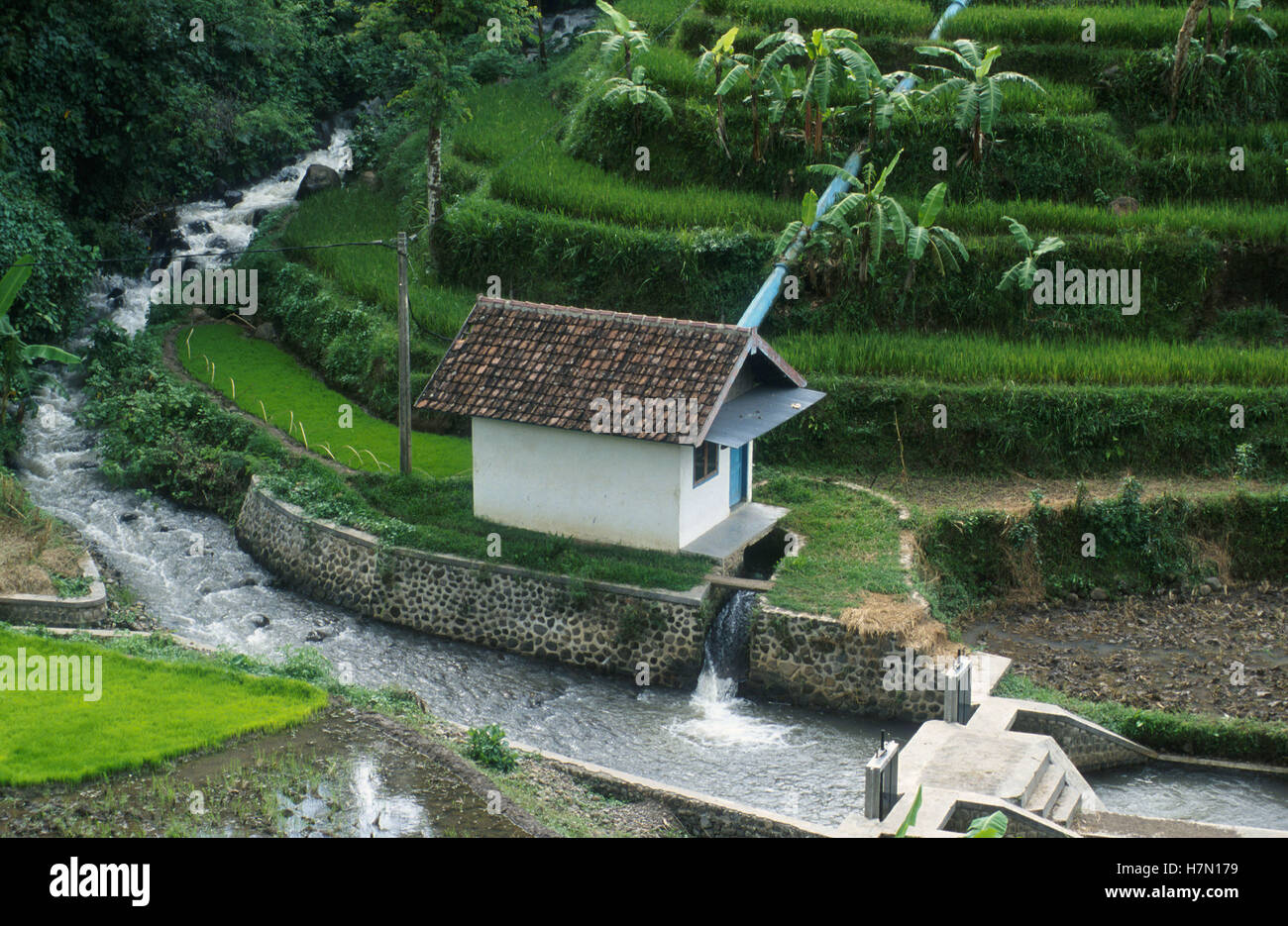Imagine harnessing the power of flowing rivers to generate electricity without the need for large dams or extensive infrastructure. This is the promise of run-of-river hydro systems.
These eco-friendly energy solutions are not only sustainable but also offer a way to produce electricity with minimal environmental impact. If you’re curious about how you can contribute to a greener planet or simply want to learn about innovative energy solutions, you’re in the right place.
We’ll explore the best run-of-river hydro systems available today, uncovering their unique benefits and why they might just be the future of renewable energy. Stay with us as we dive into the details that could change how you think about power and sustainability.
Run-of-river Hydro Basics
Run-of-river hydro systems use flowing water. No large dams are needed. Water from rivers spins turbines. These turbines make electricity. People like this system. It is gentle on the environment. Fish and plants stay safe. This method uses natural flow. It does not store water in big reservoirs.
These systems are small and easy to set up. They work well in mountainous areas. Small communities benefit the most. They get clean power. Less money is needed for upkeep. It is a smart choice for green energy.
Eco-friendly Advantages
Run-of-river hydro systems are very eco-friendly. They use the natural flow of rivers. This means less harm to wildlife and plants. These systems do not need large dams. Dams can change water habitats a lot. With run-of-river, fish can swim freely. Birds can nest without worry.
Energy from these systems is clean. No pollution from burning fuels. It is renewable and safe for the planet. People do not need to worry about air pollution. These systems work with nature, not against it. They help keep the earth healthy.
Key Components Of Run-of-river Systems
The diversion weir is like a small dam. It guides water from the river. This water goes into the hydro system. It helps control the water flow. This keeps the system safe and steady. The weir is often made from strong materials. It needs to last a long time. It must withstand water pressure.
The intake collects water from the river. It sends water to the penstock. The penstock is a large pipe. It carries water to the powerhouse. It must be strong to handle water pressure. Water travels fast through it. This speed helps produce energy.
The powerhouse is where energy is made. It houses the turbine. Water from the penstock spins the turbine. This creates electricity. The turbine is a key part. It must work well. Without it, no energy is made.
Top Run-of-river Systems Worldwide
The Niagara Riveris a famous run-of-river system. It powers parts of New York and Ontario. The Columbia Riverin the USA has many hydro plants. These plants help with electricity and water flow. North America’s systems are reliable and effective.
Europe boasts impressive systems like the Rhine River. This river runs through several countries, helping them generate power. The Danube Riveralso supports energy needs. European rivers are essential for clean energy. They support sustainable power solutions.
The Yangtze Riverin China is a key source of hydro power. It is one of the largest systems. The Ganges Riverin India also provides energy. Asia’s rivers are vital for electricity production. They play a major role in powering cities.
Criteria For Eco-friendly Selection
Choosing the right hydro system helps nature. Run-of-river systems have less impact. They don’t need big dams. Rivers can still flow naturally. Fish and plants can live better. These systems are good for water life.
Local people can gain from these systems. Jobs can be created. They can have more energy. Schools and hospitals might get power. Communities can grow stronger. It makes life better for everyone.
Run-of-river systems work well. They produce energy steadily. Maintenance is often low. They are cost-effective. Efficiency helps save money. These systems are reliable.
Innovative Technologies In Run-of-river
Fish-friendly turbines help keep fish safe. They let fish swim through without getting hurt. Many rivers have fish that need protection. These turbines use special shapes. Fish pass easily. The blades move slowly. This reduces harm. Saving fish is important. Fish are part of the river’s life.
Adaptive flow control manages water flow. It adjusts to changes in the river. This helps create steady electricity. People use water wisely. Water can be stored or released. All depends on the need. This keeps the system balanced. It also supports aquatic life.
Challenges And Solutions
Seasonal changes affect water flow in rivers. In rainy seasons, water flow is high. During dry seasons, it can be very low. This change in water levels is a big challenge. Systems must adapt quickly. Engineers design flexible systems. These systems can handle both high and low water flows. Effective planning is key to manage these changes. Technology helps in predicting water flow patterns. This helps prepare for future changes.
Building hydro systems costs a lot. Initial investment is high. Engineers need strong materials. Safety is very important. Long-term savings can balance costs. Maintenance keeps systems working well. Planning for repairs is essential. This ensures the system lasts longer. Government support can reduce costs. Grants and loans help fund projects. Community involvement is also helpful. Local support boosts project success.
Future Of Run-of-river Systems
New technologies help run-of-river systems work better. Sensors track water flow. This helps save energy. Smart grids distribute electricity. They make sure no energy is wasted. Engineers use drones to check equipment. This makes repairs faster and safer. Turbine designs are getting better. They work well even with low water flow. These advancements help produce more power.
Governments are making laws to help run-of-river systems. They offer tax breaks to companies. This saves money. Permits are easier to get now. This speeds up project starts. Grants support research for better designs. Policies help bring more clean energy to people. Communities also get involved. They help protect local water sources. These efforts support a greener future.
Frequently Asked Questions
What Is A Run-of-river Hydro System?
A run-of-river hydro system uses natural river flow to generate electricity. It doesn’t require large reservoirs. This system is eco-friendly and less intrusive to local ecosystems. It typically involves a small diversion of water. Energy production varies with river flow, making it ideal for regions with consistent water flow.
How Does Run-of-river Differ From Dam Hydro?
Run-of-river systems use flowing water, not stored water like dam systems. They have smaller environmental impact due to lack of large reservoirs. Energy output depends on river flow rather than reservoir size. They offer more sustainable and less invasive energy solutions compared to traditional dam hydroelectric systems.
Are Run-of-river Systems Environmentally Friendly?
Yes, run-of-river systems are considered environmentally friendly. They don’t require large reservoirs, reducing habitat disruption. They maintain natural river ecosystems and fish migration paths. These systems minimize carbon footprint and have low operational emissions. Their design supports biodiversity conservation and ecosystem health.
Where Are Run-of-river Systems Most Effective?
Run-of-river systems are most effective in regions with consistent river flow. They are ideal for mountainous areas and regions with predictable water levels. They work best where water flow doesn’t vary dramatically. These systems are commonly used in regions with continuous year-round rainfall.
Conclusion
Choosing the best run-of-river hydro system offers many benefits. These systems provide clean, renewable energy with minimal environmental impact. They are efficient and cost-effective for communities near rivers. Consider local conditions before deciding on a system. Assess the river’s flow and the community’s energy needs.
Proper planning ensures successful installation and operation. Embrace sustainable energy solutions for a greener future. Every step towards clean energy matters. Run-of-river hydro systems offer a practical approach. They contribute to a sustainable planet. Make informed choices for your energy needs.
Let’s prioritize the environment and future generations.
Read More:
- Best Home Water Filtration Units: Top Picks for Clean Water
- Diy Hydroponic Grow System Guide: Cultivate Success
- Mini Hydro System Feasibility Study: Unlocking Eco Solutions
- Chemical Dosing Pump Pricing Guide: Maximize Your Investment
- Diaphragm Pump Cost Comparison: Affordable Options Unveiled
- Hydroelectric Dam Maintenance Cost Analysis: Cutting Costs
- Commercial Water Filtration System Cost: Save Money Today
- Diaphragm Pump Maintenance Tips: Ensure Peak Performance




